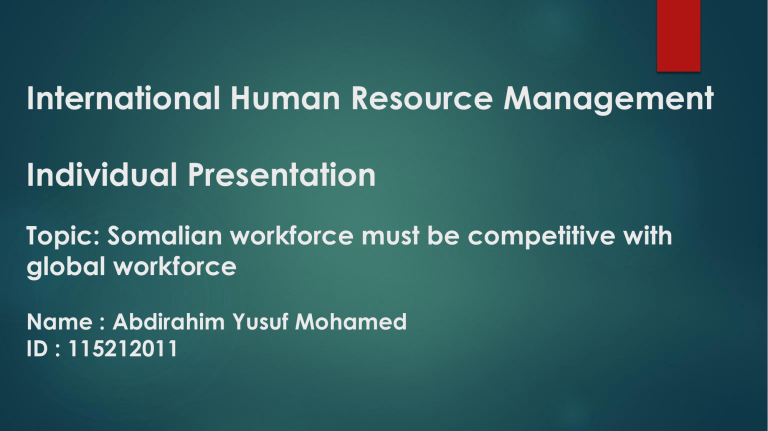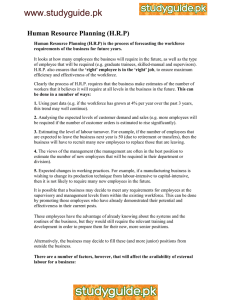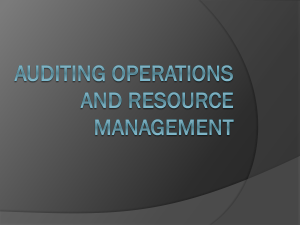
International Human Resource Management Individual Presentation Topic: Somalian workforce must be competitive with global workforce Name : Abdirahim Yusuf Mohamed ID : 115212011 Somalian workforce must be competitive with global Introduction The workforce is the total number of people in a country or region who are physically able to do a job and are available for work Somali interactions with the global economy from the colonial period have arguably had both negative and positive effects on the Somali workforce. Colonial economy was never about benefiting African economies, but rather to create wealth in Europe through mass exports of resources and the use of cheap labor. Colonial exports have had devastating environmental and cultural effects on local communities. Cont….. The labour and employment sector aims to create the right environment for the generation of decent jobs for the productive workforce of the country and is responsible for provision of employable skills that are critical for socioeconomic transformation of the country through public and private training institutions as well as through the introduction of firm-based training programmes, apprenticeship, leadership, internship and placement programmes. The sector comprises four sub-sectors (i) employment creation through employment intensive investment programmes using labourbased technology, (ii), skill development, (iii) social protection and welfare, (iv) labour and industrial relations Cont.... One major benefit of the linkage to the global colonial economy was a diversification of the Somali economy. The traditional economic activity in Somalia is herding livestock – mostly camels, sheep and goats. There has also always been fishing along the coastline and farming in the riverine valleys in the south, but these activities were small-scale compared to livestock agriculture, which is glorified in the cultural rhetoric, poems and stories of the Somali clans. Plantation economies brought new types of jobs in processing, transport and trade; skills in trade. Global Workforce Competitive Competing in today’s global economy is complex. Countries not only need advanced technical and vocational skills, but also a flexible workforce that can adjust to rapid shifts in demand. That is why investing in skills is so vital to a country’s economic growth and competitiveness. In particular, education systems must be oriented towards producing youth who have both strong foundational skills as well as specific skills for jobs. The demand for job-specific skills has been growing around the world. Globally, firms say that the quality and supply of skilled labor is a major roadblock to their growth. Employers around the world are also demanding that new hires have both technical and “soft” skills. Across South Asia, skills development is a common concern. In India, for example, the Government launched a sweeping reform targeting skills training for 400 million workers by 2022. We see similar trends in other countries in the region, as well as in many developed and developing countries around the Competing in today’s global economy is complex. Countries not only need advanced technical and vocational skills, but also a flexible workforce that can adjust to rapid shifts in demand. That is why investing in skills is so vital to a country’s economic growth and competitiveness. In particular, education systems must be oriented towards producing youth who have both strong foundational skills as well as specific skills for jobs. Somali workforce competitive A strong, dynamic and empowered labour force is critical in catalysing and driving the transformations required in making Somalia a competitive and growth-oriented country providing quality jobs to her growing labour force. The ILO estimated Somalia employment to population ratios for Somalia at 41%. The labour force participation rate was estimated at 65.9% and 37.6% among males and females, respectively. In overall terms, Somalia suffers from high unemployment and underemployment. The country has relatively high vulnerable unemployment estimated at 59%, and a considerable unemployment rates for persons with upper primary level of education at 20.9% and those with secondary level of education an unemployment rate of 34.6%. Also, 41% of the employed in Somalia are in elementary occupations. The largest proportion of employed persons are elementary occupations (41%) followed by professional (15%), Skilled agricultural, forestry and fishery workers (10%) and craft and related trades workers (9%). Conclusion Working towards creating a better employee experience has been one of the major global workforce trends for the last few years. Employers and recruiters have realized that the key to engaging the employees is through transforming their workplace experience. Including more and more employee engagement programs. These include fun activities, educational training, up skilling courses, etc. Employee well-being is an imperative part of improving employee experience. From arranging Covid-19 vaccination drives to arranging well-being webinars, recruiters are trying to help employees with all possible resources. Many employers are also offering Covid-19 insurance policies for the safety of employees and their families



